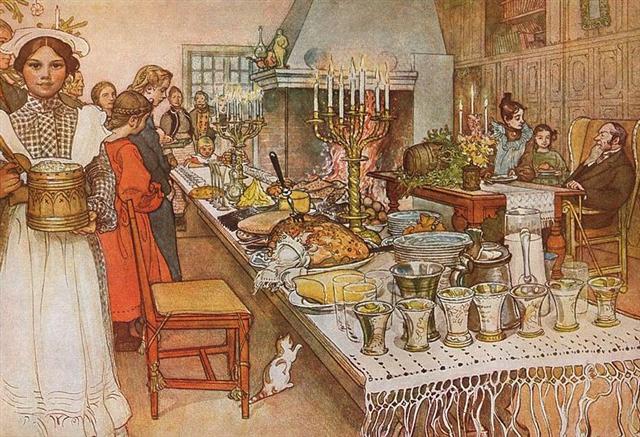5. Let's move on:
We should notice that day number 354 is December 20, a Moon-day. In line a8 my colours for the calendar days agree with the colours for the glyph numbers.
Possibly these 10 glyphs refer to winter solstice north of the equator. But I cannot see any special sign in Ga8-11 which easily can be connected with the birth of Christ (although it is a day of Saturn). However, there is a sign of birth (hanau) at January 1:
From January 1 the colour harmony between dates and glyphs is broken. Ga8-10 stands out, its 'berry tree' is of another and better kind than those in the surrounding glyphs. And the left part of Ga8-10 is not in such a poor shape as the left part of Ga8-7--8 and Ga8-11. My colour green is connected with Venus and therefore with birth. "One reason celebrations occur on Christmas Eve is that the traditional Christian liturgical day starts at sunset, an inheritance from Jewish tradition. This practice is based on the story of Creation in the Book of Genesis: 'And there was evening, and there was morning - the first day.' This structure for the liturgical day is followed for all feast days throughout the year in the Eastern rite and is retained for Christmas (as well as for Sundays and other major festivals) in the West, where the liturgical day ordinarily begins at midnight. Many churches still ring their church bells and hold prayers in the evening before holidays; for example, the Nordic Lutheran churches. In some languages, such as the Scandinavian, Christmas Eve is simply referred to as 'Christmas Evening'." (Wikipedia)
(Christmas Evening, 1904-5, by the Swedish painter Carl Larsson.) The G text possibly says we should count 7 days not from Christmas Day but from Christmas Eve, in which case Lucia ought to come in the evening before December 13:
Likewise it could be the evening of December 31 which is the beginning of a new year:
The year should be ending with day 364. |
|||||||||||||||||||||||||||||||||||||||||||||||||||||||||||||||||||||||||||||||||||||||||||||||||||||||||||||


















